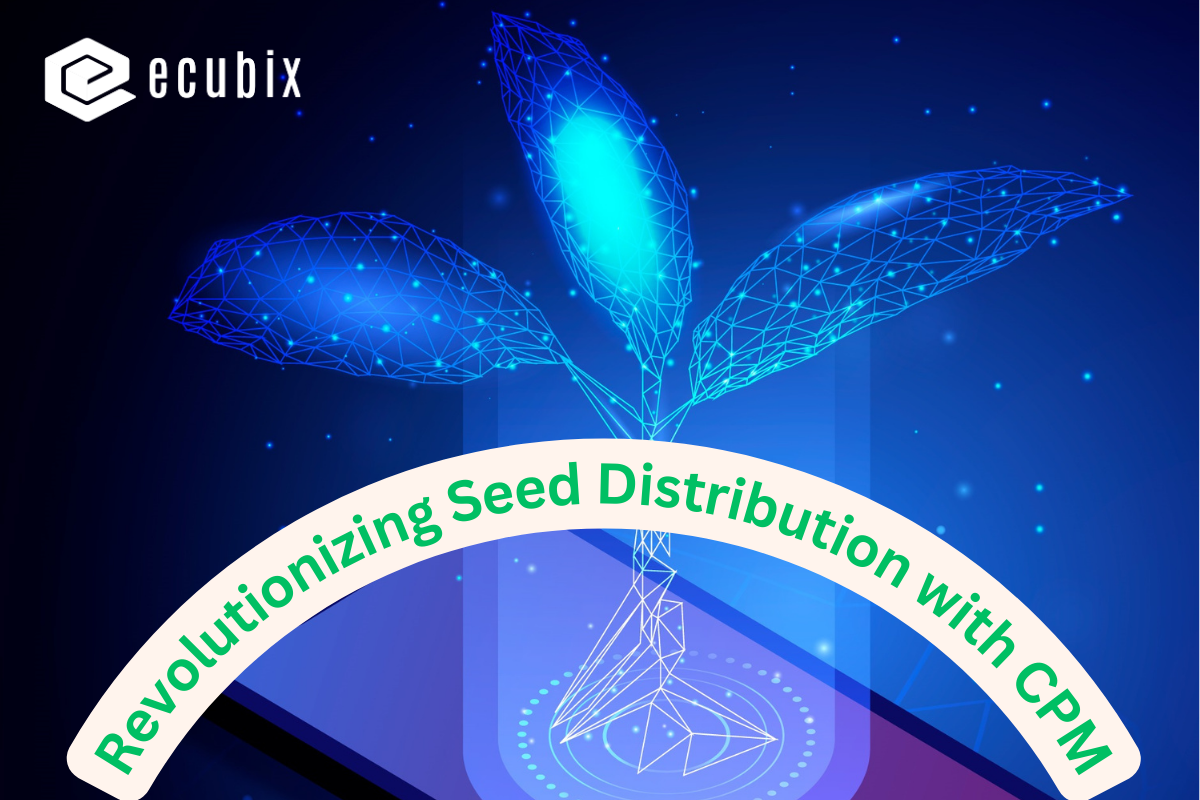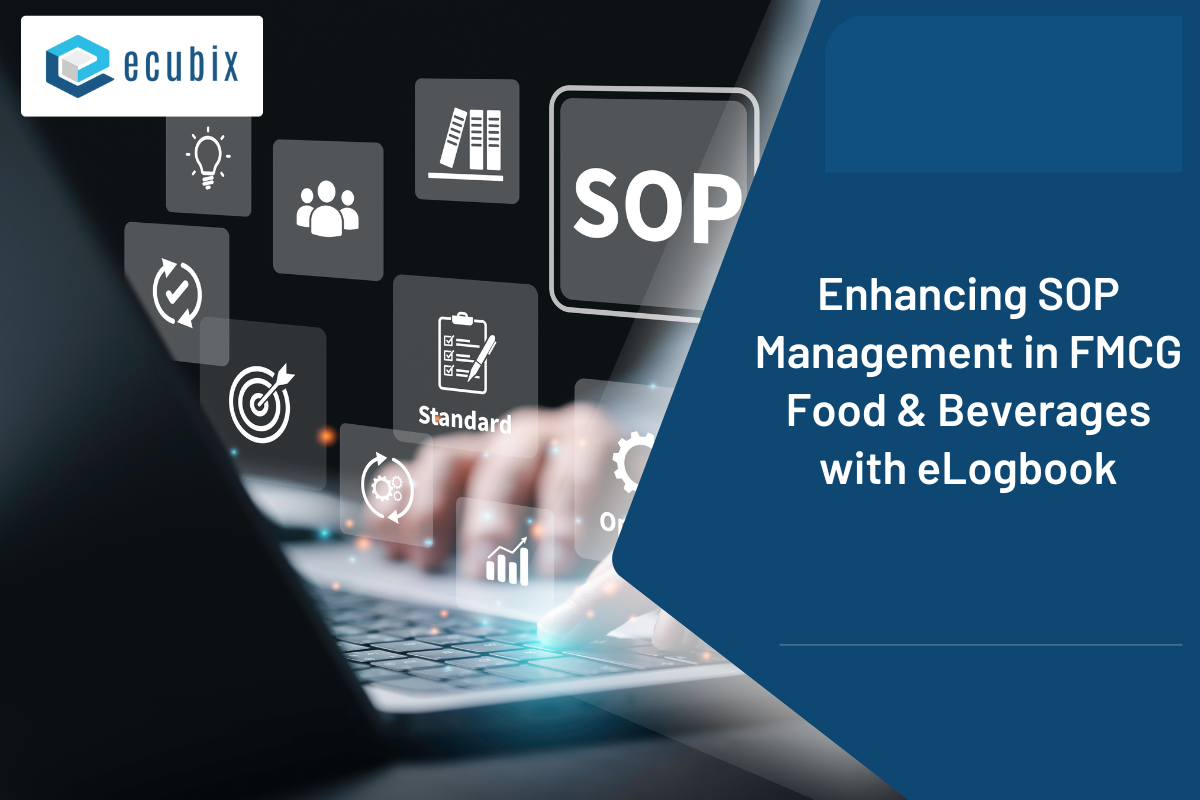
Table of Contents
Published on: August 2, 2024
According to Allied Market Research, the global seed market size stood at USD 114 billion in 2019 and is expected to grow at a compound annual growth rate (CAGR) of 5.7% from 2020 to 2027. Effective distribution channels play a crucial role in catering to consumer demands efficiently and delivering quality products to farmers on time. Poor distribution infrastructure results in lower yields and higher costs, adversely affecting revenue generation and profit margins.
Suppliers can identify gaps in their existing distribution channels by analyzing historical sales data alongside real-time information about product demand and developing suitable strategies to address them. Businesses leverage CPM software solutions equipped with advanced analytics capabilities to monitor order fulfillment accuracy, shipping times, inventory turns, and so on. Continuous assessment of these parameters allows stakeholders to pinpoint bottlenecks hindering optimal functioning and subsequently implement corrective actions aimed at streamlining processes and boosting efficiencies.
In recent years, there has been growing awareness among stakeholders in the seed industry concerning the inadequacy of traditional distribution models. Key issues include a lack of transparency throughout the supply chain, insufficient traceability mechanisms, weak communication between various parties involved, and limited access to technology-driven tools enabling end-to-end tracking.
Channel Performance Management with a track & trace system represents a systematic methodology employed by seed companies aiming to enhance their distribution efficiency by measuring critical performance metrics continuously. It involves collecting and organizing relevant data covering several dimensions such as sales performance, inventory levels, employee productivity, etc., ultimately leading to informed decision-making pertaining to resource allocation and operational adjustments needed to sustain a competitive edge in today’s fast-evolving marketplace.
One Major Challenge Faced by Seed Industry in Distribution:
One major challenge posed by current seed distribution channels revolves around inaccurate forecasting of consumer demands leading to overproduction and subsequent spoilage. The limited availability of real-time tracking tools causes delays in detecting problems early enough to mitigate consequential losses.
Exploring the Potential of Channel Performance Management (CPM) with a Track & Trace System in the Seed Industry

(1) Definition and Key Principles of Channel Performance Management
Channel Performance Management (CPM) with a track & trace system is a strategic approach used to optimize and manage the efficiency and effectiveness of distribution channels. It involves the systematic collection, analysis, and application of data related to various distribution channels to enhance overall performance. The key principles of CPM include:
- Performance Metrics: CPM relies on defining specific, measurable indicators that align with business goals. These may include metrics such as sales volume, delivery times, and customer satisfaction rates.
- Data Collection and Analysis: Effective CPM strategies depend on accurate and timely data collection. This involves using technology to gather data across all distribution channels and analyzing this data to identify trends, inefficiencies, and opportunities for improvement.
- Continuous Improvement: CPM is not a one-time effort but an ongoing process. It requires regular review and adjustment of strategies based on performance data to ensure continuous improvement and adaptation to market changes.
- Collaboration and Communication: Successful CPM requires strong collaboration and communication across all levels of the organization and with external partners. This ensures that everyone involved in the distribution process is aligned with the strategic goals.
(2) Advantages of Implementing CPM Strategies in Seed Industry Distribution
Implementing CPM strategies in the seed industry can provide several significant advantages, supported by statistical data:
-
Improved Efficiency and Cost Reduction:
- Data Insight: According to a study by McKinsey, companies that leverage data-driven CPM strategies can achieve up to 20% reduction in logistics costs.
- Resource Optimization: By identifying and eliminating inefficiencies, seed companies can optimize resource allocation, reducing waste and lowering operational costs.
-
Enhanced Market Reach and Penetration:
- Market Expansion: CPM can help companies strategically expand into new markets by identifying high-potential regions and optimizing distribution routes.
- Customer Insights: With better data on customer preferences and purchasing patterns, seed companies can tailor their offerings to meet market demands more effectively.
-
Increased Supply Chain Transparency and Reliability:
- Real-Time Monitoring: The CPM allows for real-time monitoring of the supply chain, leading to improved transparency. According to Gartner, companies that implemented real-time supply chain monitoring experienced a 15% increase in supply chain reliability.
-
Enhanced Customer Satisfaction and Loyalty:
- Timely Deliveries: CPM ensures that seeds are delivered on time, which is critical for agricultural planning. A survey by Deloitte found that 72% of agricultural businesses consider timely delivery of inputs as a critical factor for their operations.
-
Adaptability to Market Changes:
- Agility: In a rapidly changing market, the ability to quickly adapt to new trends and demands is crucial. CPM enables seed companies to be more agile and responsive to market changes. For instance, companies using CPM reported a 30% faster response time to market shifts, according to a report by Accenture.
Case Studies and Success Stories in Leveraging CPM in the Seed Industry
(1) Pioneer Seeds, a leading global seed company, implemented Channel Performance Management with (CPM) and track & trace strategies to optimize its distribution network.
CPM Strategies Implemented:
- Data Analytics: Utilized advanced data analytics to monitor and evaluate distribution channel performance.
- Real-Time Monitoring: Integrated IoT devices for real-time tracking of shipments.
- Collaborative Planning: Engaged in collaborative planning with distributors to improve efficiency and alignment.
Results:
- Efficiency Improvement: Achieved a 15% reduction in distribution costs within the first year.
- Delivery Performance: Improved on-time delivery rate by 20%, ensuring timely availability of seeds for farmers.
- Market Expansion: Successfully entered three new emerging markets, increasing market share by 10%.
(2) Syngenta, a global agrochemical and seed company, adopted CPM strategies to streamline its complex supply chain and improve market responsiveness.
CPM Strategies Implemented:
- Performance Dashboards: Developed real-time performance dashboards to monitor key metrics.
- Incentive Programs: Introduced performance-based incentives for distributors to drive better results.
Results:
- Demand Forecasting Accuracy: Increased demand forecasting accuracy by 25%, reducing instances of overstocking and understocking.
- Distribution Efficiency: Improved distribution efficiency, reducing lead times by 18%.
- Sales Growth: Achieved a 12% increase in sales due to better market alignment and customer service.
(3) Monsanto, a major player in the seed industry, implemented comprehensive CPM strategies to enhance its global distribution network.
CPM Strategies Implemented:
- End-to-End Supply Chain Integration: Integrated all aspects of the supply chain, from production to final delivery, into a single CPM platform.
- Customer Feedback Mechanisms: Established mechanisms to collect and analyze customer feedback for continuous improvement.
- Sustainability Initiatives: Incorporated sustainability metrics into CPM to ensure eco-friendly practices.
Results:
- Supply Chain Visibility: Achieved complete visibility across the supply chain, reducing disruptions by 30%.
- Sustainability Performance: Met sustainability goals, reducing carbon footprint by 15% through optimized logistics.
- Customer Retention: Increased customer retention rates by 20% due to enhanced service quality and reliability.
Key Strategies and Techniques for Leveraging CPM in Seed Industry Distribution

(I) Overview of Traditional Distribution Channels in the Seed Industry
The seed industry has traditionally relied on a variety of distribution channels to deliver products from producers to end consumers. These channels typically include:
- Direct Sales: Seed producers sell directly to farmers and agricultural businesses.
- Wholesalers and Distributors: Intermediaries that purchase seeds in bulk and distribute them to retailers and end users.
- Retailers: Local stores and agricultural supply shops that sell seeds to individual farmers.
(II) Improving Visibility and Communication Across the Distribution Network
Visibility and communication are key components of effective CPM:
Enhanced Communication:
-
- Communication Platforms: Use digital communication platforms to facilitate real-time information sharing among all stakeholders.
- Feedback Mechanisms: Establish feedback mechanisms to gather input from channel partners and customers.
(III) Demand Planning and Forecasting Using CPM Tools and Technologies
Accurate demand planning and forecasting are essential for optimizing distribution:
- Predictive Analytics:
- Data Utilization: Use predictive analytics to forecast demand based on historical data and market trends.
- Inventory Management: Optimize inventory levels to meet forecasted demand without overstocking or understocking.
- Integrated Planning Tools:
- ERP Systems: Implement Enterprise Resource Planning (ERP) systems to integrate demand planning with supply chain management.
(IV) Performance Monitoring and Measurement in Distribution Channels
Continuous performance monitoring is critical for effective CPM:
Performance Dashboards:
- Visualization Tools: Use dashboards to visualize performance metrics in real-time.
- Actionable Insights: Generate actionable insights from performance data to drive continuous improvement.
Leveraging Channel Performance Management (CPM) with a track & trace system can significantly enhance the efficiency and effectiveness of seed industry distribution channels. By addressing traditional limitations and inefficiencies through comprehensive channel mapping, improved collaboration, enhanced visibility, accurate demand planning, and continuous performance monitoring, seed companies can achieve greater market reach, cost efficiency, and customer satisfaction. Embracing these strategies will position the seed industry for sustainable growth and competitiveness in an evolving market landscape.



















